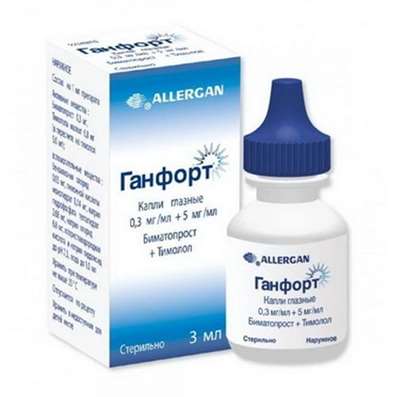Brain and sensory systems
06 Jun 2017
Dr. Doping tells about the structure of sensory systems, the map of receptor surfaces and the functions of the thalamus.
Our body is richly endowed with various senses. Even in ancient times, identified the main five senses: sight, hearing, smell, touch and taste. In fact, we are equipped with sensor systems much richer. Their purpose is understandable: we collect information from the external environment and from the internal environment of the body, because our brain is important in what state are internal organs, how much the intestines or bronchi are stretched - all this is significant enough.
Most sensory systems have a standard structure, and everything starts with receptor cells, that is, sensors that respond to a signal-a chemical signal (molecules appeared in the environment) or physical, touch, electromagnetic waves, as in the case of vision. Further, this sensor, the receptor cell, transmits electrical impulses to the conducting nerve. A nerve is a wire that connects the sensor and the central processor, the brain and spinal cord. As we know, we have 31 pairs of spinal nerves, and all of them are engaged in transmitting sensory signals from different body levels. In addition, of the 12 pairs of cranial nerves, most also deal with sensorics. And finally, the third, the most difficult stage: the signal enters the central nervous system and then, first, inside the spinal cord and then the brain is processed sequentially, these or other reactions are triggered, the information is remembered. The higher the signals move along the central nervous system, the more complex computational operations are realized. The most complex human moments of processing information occur in the cerebral cortex.
If we look more closely at our receptors, from them, in fact, everything begins. We see that they are divided into two types: they can be nerve cells or non-nerve cells. If the receptor is a neuron or its outgrowth, such receptors are called primary sensory. In a sense, evolution began with them. A signal came to the nerve cells, an electrical impulse was generated further, and in this brain-friendly form, information was raised into the spinal cord, the brain. But there are a lot of signals, and they are different. Apparently, the resources of neurons are not enough to react to everything in the world, and the more sensory flows you read, the more information about the environment, the more correct your behavior, so the evolution was looking for some other sensors, other than neurons. Eventually a number of cells - especially epithelial, cover cells on the surface of the skin or on the surface of the body cavities - also turned into receptors. But these are no longer nerve cells, and such receptors are called secondary sensory. In order for them to transmit a signal to the central nervous system, they need the help of neurons of the peripheral nervous system. That is, the receptor reacts to the stimulus, then it must transfer it to the so-called conducting neuron, and only the processes of the conduction neuron will reach the brain and spinal cord.
Primarily sensory receptors include the receptors of our olfactory system, as well as the receptors of such systems as skin, muscle, pain, and receptors of the system of internal sensitivity. Secondary sensory receptors are vision, hearing, vestibular system and taste. It turns out that we have nine large serious sensor systems. Although in fact sometimes offer more. The criterion for separating a part of our body into a separate sensory system is generally quite understandable. We are talking about a special sensory system, if there are their receptors, their own paths and their separate centers in the brain and spinal cord that exchange information within the sensory system. From this point of view, skin sensitivity, pain sensitivity and muscular sensitivity are different sensory systems, although it was once said about the general sensitivity of the body. The sense of smell is a separate sensory system, but there is a so-called additional olfactory system - a vomeronasal organ. This design, though small, satisfies all the criteria applicable to the sensor system. Therefore, it is quite logical for the vomeronasal organ and everything related to it, that is, signals that arise when pheromones appear, and then go into the hypothalamus, to separate into a separate sensory system. But it turns out to be painfully small, but it is very much reduced.
How does the receptor react at all to the signal? Due to what the sensitive cell or its process responds to a physical or chemical effect? The logic of the work here is pretty close to what neurons do in general. An ordinary nerve cell responds to the appearance of a mediator substance. Taste receptors or olfactory receptors, internal sensitivity receptors, react approximately to the appearance of a chemical. On the receptor membrane there are sensitive proteins with which the ion channels are connected. When a certain odor arises, they open, positively charged ions enter the cell, a charge shift up, depolarization occurs, and this can cause the generation of electrical impulses. Further, these impulses will escape again into the brain or spinal cord. Approximately the same principle is used for receptors of mechanical sensitivity and even visual receptors. As a rule, some adequate sensory action causes the opening of the ion channels at the receptor membrane, although sometimes closing, of the ion channels, a charge shift in the cell arises and an action potential is generated that runs off into the central nervous system. And the stronger the sensory effect, the more often the impulses (action potentials) run first along the sensory nerve, and then inside the sensory centers of the brain and spinal cord.
This is the first of two basic laws of operation of sensory systems. The law sounds like this: the intensity of the energy of the sensory signal is encoded by the frequency of the action potential in the conducting nerve. That is, the louder the sound, the brighter the light, the more concentrated the solution, for example, glucose, the more often the impulses run through this or that nerve. Depending on this frequency, our brain and higher centers learn about the intensity of the sensory signal. If we talk about real numbers, then the signal, which is subjectively perceived as rather weak, somewhere 20-40 pulses per second. If the pulses run with a frequency of 50-70 Hz on the nerve, then this is subjective to us a signal of medium strength. When closer to 100 pulses per second, that is 100 Hz, this is a strong signal. And when it goes beyond 100 Hz, it is already an extremely strong signal, and such signals are often subjectively unpleasant for us. Too bright light, too loud sound - we try to avoid such influences, because the chance of damaging those same receptors or, even worse, sensory centers of the brain and spinal cord is great.
In order for the receptors to function well and qualitatively, they usually need some auxiliary structures that create all the conditions for them. Receptors function already inside these structures. We call such structures the sense organs. Do not confuse the concept of "sense organ" and "sensory system." The sensory organ is the place where the receptor is good. For example, the eye is the organ of vision. The inner ear or snail is the organ of hearing. Skin is an organ of touch, pain sensitivity.
In addition to the intensity, energy, each sensor signal is characterized by one more quality. From the point of view of the organization of the sensory system, qualitatively different signals are those that act on different receptors. This is not very consistent with our everyday perception of the work of sense organs and sensory systems, but this is exactly so. The easiest way to understand this is by the example of skin sensitivity. We have a skin surface on which receptors are scattered, nerve cell processes, and different receptors serve different skin areas. Accordingly, there is a receptor and a neuron working with the thumb, and there is a neuron working with the little finger. Qualitatively different signals are signals that are read from different parts of the skin. For the auditory system, the organization of our cochlea is such that different receptors react to signals of different tonalities. There are receptors tuned to high frequencies, to low frequencies, medium frequencies. For our visual system qualitatively different signals are signals coming from different points of space, because different photoreceptors in our retina seem to scan their piece of this 2D image and report to the central nervous system about certain points in certain places of space. That is, qualitatively different signals are signals acting on different receptors.
The point is that the receptors, as a rule, are located in a certain place of our body. This zone is called the receptor surface. Each receptor transmits a signal to its nerve cells, information from neighboring receptors is transmitted to neighboring nerve cells. As a result, the receptor surface is parallel displayed on the structures of the brain and spinal cord - this parallel transfer is familiar to you from geometry. As a result, a very interesting effect arises: in our head or spinal cord, a map of the receptor surfaces is formed. Our skin surface with the thumb, ear, back, little finger, knee and so on is displayed in the centers of skin sensitivity, the retina is displayed in the visual centers, and the snail and its basilar membrane are in the auditory centers. Parallel transfer allows our brain to distinguish signals of different quality. How does the brain know that they have touched the nose or the knee? After all, the impulses that run through the nerve cells are exactly the same. You can learn only if you look at which axon the signal came running. In cybernetics, this is called the channel number encoding. The principle of encoding the channel number is also the basis of the operation of sensory systems. This is the second basic law of the operation of sensory systems. It sounds like this: the quality of the sensor signal is encoded by the channel number. We can encode the signal intensity with the frequency of the PD, encode the qualitative characteristics with the channel number, and this is enough for the brain to further process this sensory information.
What happens in the brain and spinal cord with sensory signals? They are filtered and are capable of triggering various reactions. The head and spinal cord, especially the head, are able to recognize the so-called sensory images. The sensory region is a collection of several sensory signals, the information essence of a higher order. The spinal cord mainly works with the sensitivity of the body, the 31 segment of the spinal cord reads information from the 31st floor of our body: it is pain sensitivity, cutaneous, muscular sensitivity and signals from internal organs - this is called interreception, internal sensitivity. Further, the white substance of the spinal cord, a cluster of axons allows you to hold, transmit this information already to the brain. The main ascending tracts of the spinal cord, those that transmit such sensory information, are the so-called dorsal columns that run on the very back surface of the spinal cord. There are also spinal-cerebellar tracts interacting with the cerebellum. To transmit pain sensitivity, the spinal-thalamic tract is very important.
If we talk about the brain, then he gets the lion's share of sensory inputs. There is an olfactory nerve, an optic nerve, a vestibulo-auditory nerve-three nerves, dealing exclusively with sensorics. In addition, such nerves as the facial, glossopharyngeal, trigeminal, also transmit a variety of sensory signals.
A very important level of processing of sensory signals is the thalamus, a structure through which all sensory flows, except for the sense of smell, rise into the cerebral cortex. The thalamus is the most important information filter working on the order of the cerebral cortex and missing what is important here and now. In addition, the thalamus very readily misses the new strong signals. In the performance of this function he helps the quadruple brain, where our ancient visual and auditory centers are located. In the end, sensory information rises in the cerebral cortex, where there are visual centers, auditory centers, taste centers. The occipital lobe is the visual cortex, the temporal lobe is auditory, the region around the central sulcus is our sensitivity. Within these sensory zones, the primary, secondary, and tertiary cortex is identified, which is engaged in the recognition of increasingly complex images. The primary visual cortex is the recognition of lines, the secondary visual cortex is the recognition of geometric figures, and the tertiary cortex is already the face of specific people. After processing at specific sensory centers, sensory information is transferred to the associative parietal cortex, where neurons are located that can work simultaneously with different sensory flows.

 Cart
Cart





